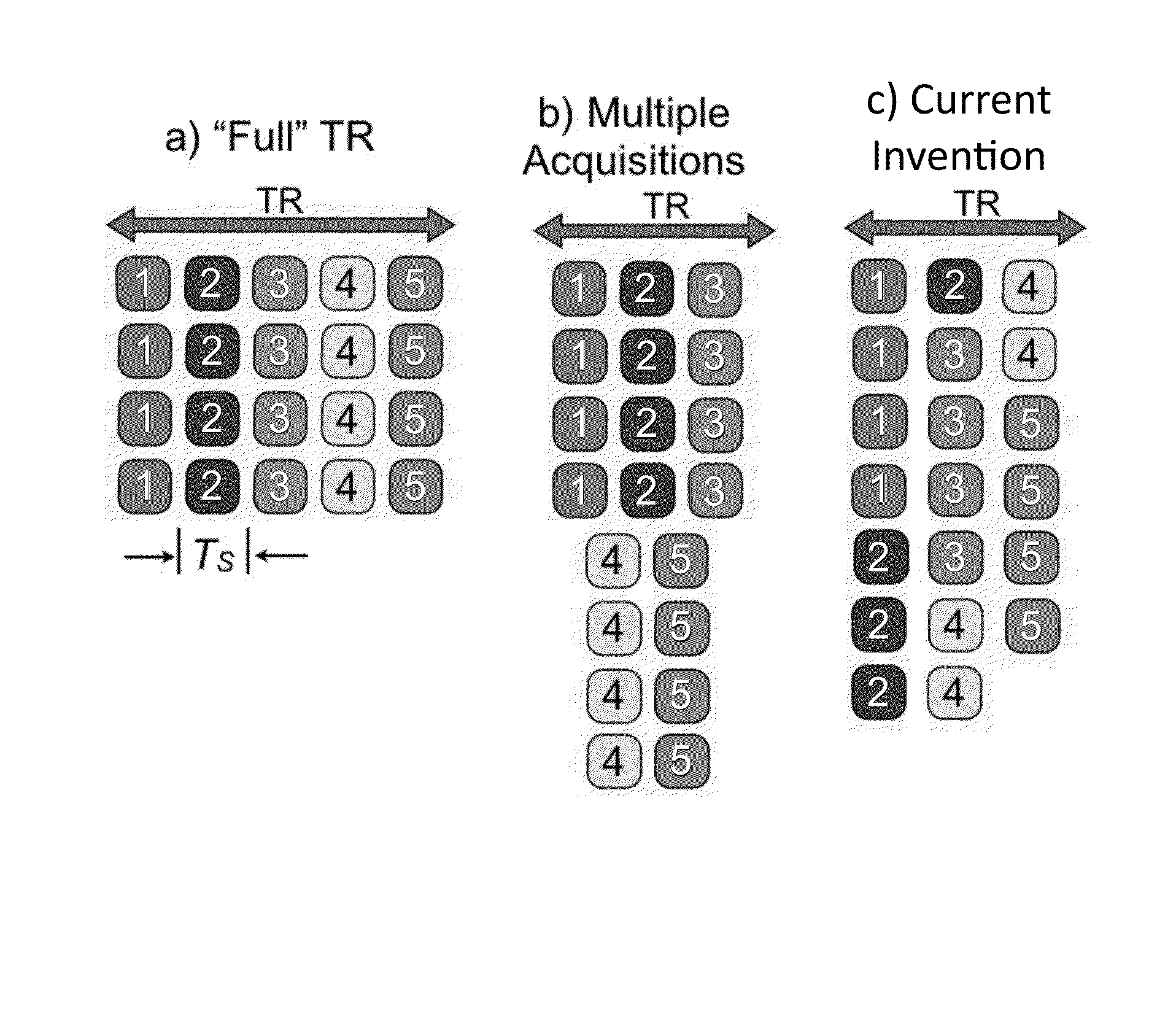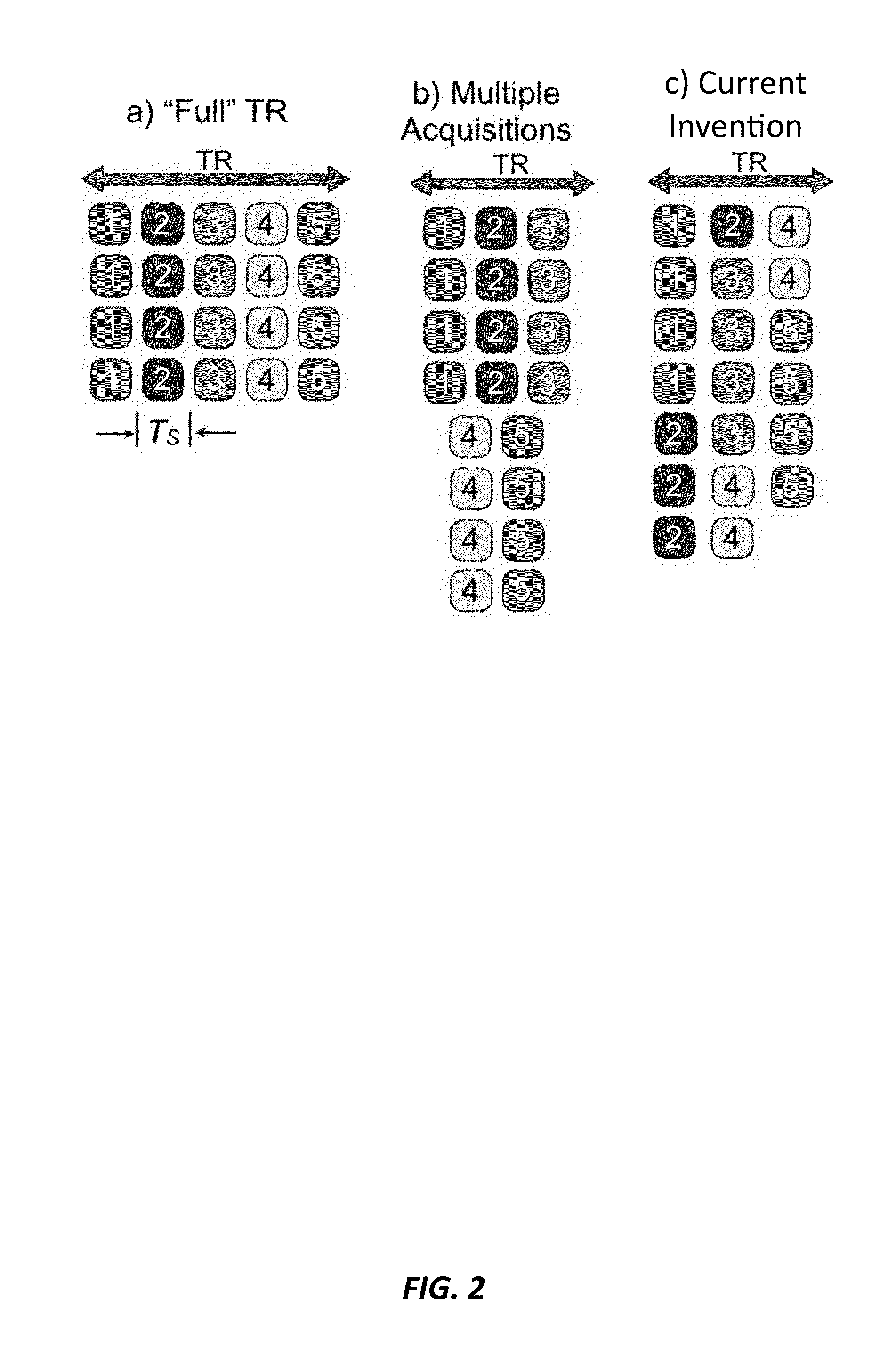Flexible ordering for multiple slice MRI
a multi-slice, flexible technology, applied in the field of magnetic resonance imaging, can solve the problems of increased scan time, limited number of slices that can be interleaved within the desired repetition time (tr), and suboptimal contras
- Summary
- Abstract
- Description
- Claims
- Application Information
AI Technical Summary
Benefits of technology
Problems solved by technology
Method used
Image
Examples
Embodiment Construction
[0018]This invention provides a method for efficiently interleaving multiple slices when the total number of interleaved slices per TR does not evenly divide the total number of slices, and for the case when the total number of excitations to encode a slice varies for different slices. The key step is to allow the excitation number within the slice to vary across a TR, unlike conventional imaging. The order is achieved by filling a matrix first along the TR dimension, then along the “slice-within-TR” dimension. The excited slices and excitation within slice are then played out in the transposed order, “slice-within-TR” first.
[0019]This method is important in maintaining a given TR despite different requirements on number of slices, duration required to excite / image each slice on each TR, and number of encoding steps per slice. Often in clinical imaging, the TR is extended to allow multiple slices, resulting in poor image contrast, particularly in T1-weighted scans.
[0020]More specifi...
PUM
 Login to View More
Login to View More Abstract
Description
Claims
Application Information
 Login to View More
Login to View More - R&D
- Intellectual Property
- Life Sciences
- Materials
- Tech Scout
- Unparalleled Data Quality
- Higher Quality Content
- 60% Fewer Hallucinations
Browse by: Latest US Patents, China's latest patents, Technical Efficacy Thesaurus, Application Domain, Technology Topic, Popular Technical Reports.
© 2025 PatSnap. All rights reserved.Legal|Privacy policy|Modern Slavery Act Transparency Statement|Sitemap|About US| Contact US: help@patsnap.com



